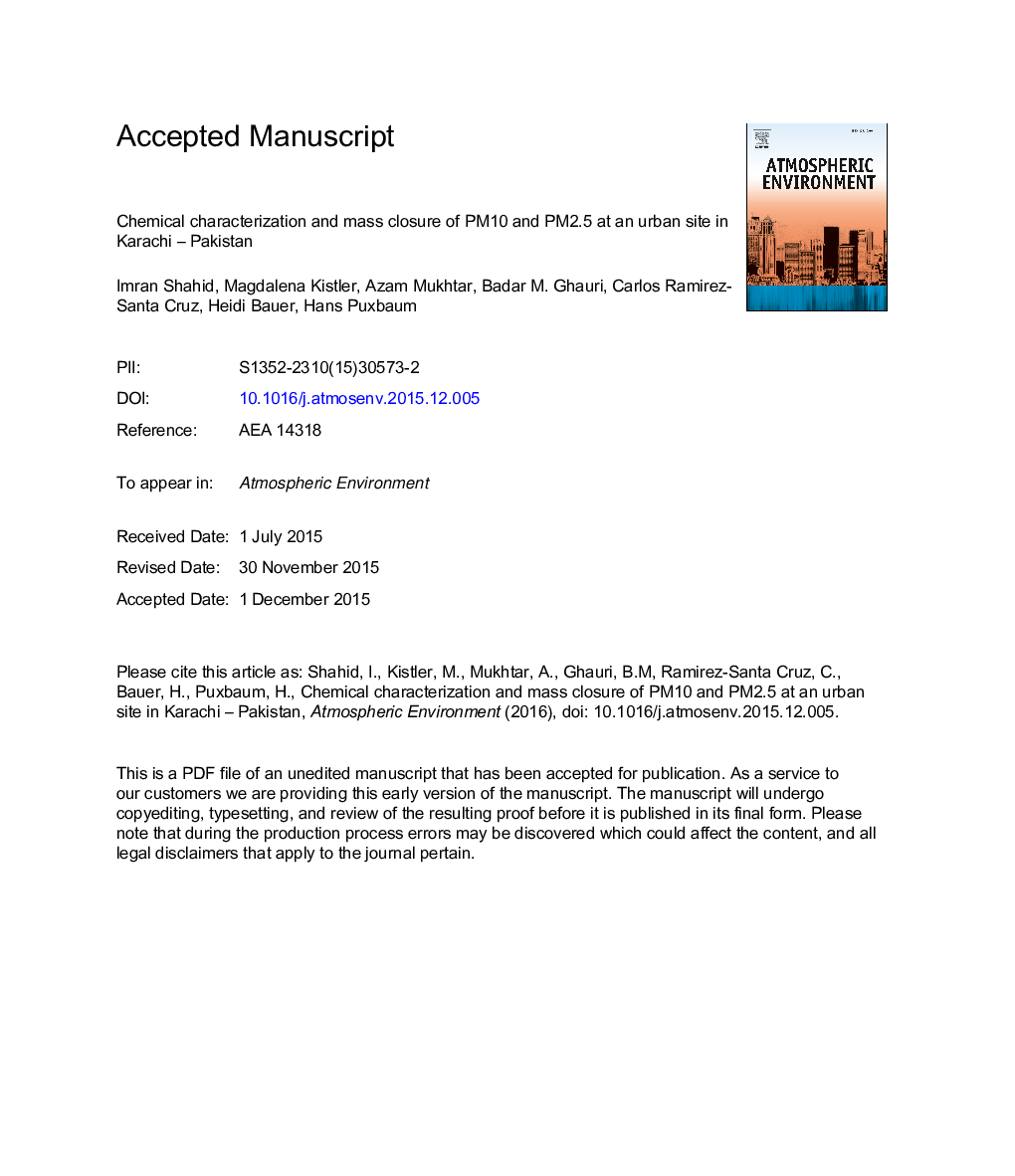| Article ID | Journal | Published Year | Pages | File Type |
|---|---|---|---|---|
| 6336728 | Atmospheric Environment | 2016 | 28 Pages |
Abstract
A mass balance method is applied to assess main source contributions to PM2.5 and PM10 levels in Karachi. Carbonaceous species (elemental carbon, organic carbon, carbonate carbon), soluble ions (Ca++, Mg++, Na+, K+, NH4+, Clâ, NO3â, SO4â), saccharides (levoglucosan, galactosan, mannosan, sucrose, fructose, glucose, arabitol and mannitol) were determined in atmospheric fine (PM2.5) and coarse (PM10) aerosol samples collected under pre-monsoon conditions (March-April 2009) at an urban site in Karachi (Pakistan). The concentrations of PM2.5 and PM10 were found to be 75 μg/m3 and 437 μg/m3 respectively. The large difference between PM10 and PM2.5 originated predominantly from mineral dust. “Calcareous dust” and âsiliceous dust” were the over all dominating material in PM, with 46% contribution to PM2.5 and 78% to PM10-2.5. Combustion particles and secondary organics (EC + OM) comprised 23% of PM2.5 and 6% of PM10-2.5. EC, as well as OC ambient levels were higher (59% and 56%) in PM10-2.5 than in PM2.5. Biomass burning contributed about 3% to PM2.5, and had a share of about 13% of “EC + OM” in PM2.5. The impact of bioaerosol (fungal spores) was minor and had a share of 1 and 2% of the OC in the PM2.5 and PM10-2.5 size fractions. In case of secondary inorganic aerosols, ammonium sulphate (NH4)2SO4 contributes 4.4% to PM2.5 and no detectable quantity were found in fraction PM10-2.5. The sea salt contribution is about 2% both to PM2.5 and PM10-2.5.
Related Topics
Physical Sciences and Engineering
Earth and Planetary Sciences
Atmospheric Science
Authors
Imran Shahid, Magdalena Kistler, Azam Mukhtar, Badar M. Ghauri, Carlos Ramirez-Santa Cruz, Heidi Bauer, Hans Puxbaum,
